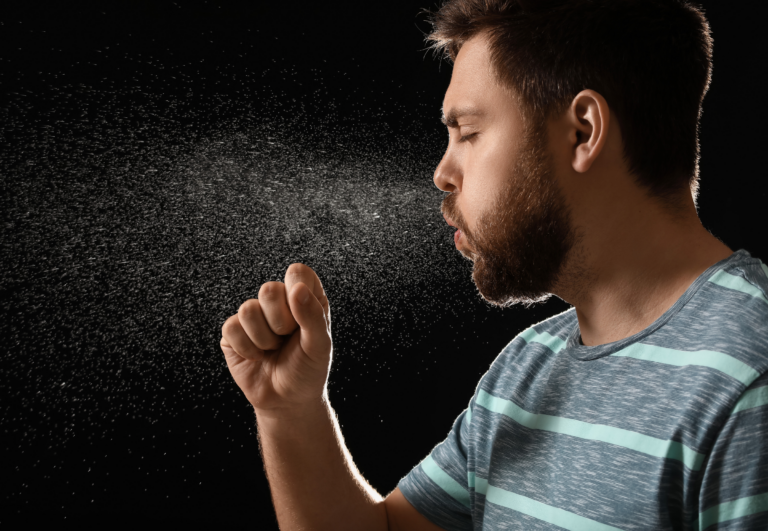Advanced Post-Run Recovery Strategies: Enhancing Muscle Repair and Performance
Effective recovery is pivotal to a runner’s training regime. It’s the crucial period where the body repairs itself, thus becoming stronger and ready for the next challenge. As a running coach, I stress the importance of optimizing the post-run recovery process to enhance overall performance and prevent injuries. The approach to recovery should be multifaceted, focusing on activities and nutrition that together aid in repairing muscle tissue and replenishing energy stores depleted during the run.
In my experience, too many runners overlook the recovery stage, focusing heavily on mileage and speed work, only to find themselves burned out or injured. Recovery, however, is where the true gains are made. It includes strategies such as active rest, proper hydration, and nutrition, each playing a vital role in helping runners bounce back quickly and effectively. These elements work together to reduce muscle soreness, and fatigue, and prepare the body for subsequent workouts.
Understanding the advanced tactics behind post-run recovery can significantly improve a runner’s ability to train more effectively. Implementing a structured recovery plan that includes gentle movement like walking or stretching to promote blood flow, and ensuring adequate hydration and nutrient intake can revitalize the body’s recovery mechanism. Tailoring these strategies to one’s individual needs and training demands enables runners to maintain a consistent and healthy training cycle.
Optimizing Sleep Patterns for Enhanced Recovery
As a UESCA certified running coach, I emphasize the critical role that sleep plays in post-run recovery. Adequate sleep facilitates muscle repair and reinforces the immune system, leading to improved performance.
The Role of Sleep in Muscle Repair
Sleep is indispensable for muscle repair, which is vital post-run. During the deep stages of sleep, the body releases growth hormones essential for repairing muscles. Ensuring enough quality sleep after training sessions boosts muscle recovery.
To optimize sleep for muscle repair:
- Consistency: Go to bed and wake up at the same time every day.
- Duration: Aim for 7-9 hours of uninterrupted sleep.
- Naps: Short naps (20-30 minutes) can aid in recovery without affecting nighttime sleep cycles.
Creating a Rest-Conducive Environment
The sleep environment directly affects the ability to fall asleep and stay asleep. A rest-conducive environment leads to higher-quality sleep, which supports the recovery process and strengthens the immune system.
Key aspects of a sleep-friendly environment:
- Darkness: Use blackout curtains or eye masks.
- Quiet: Try earplugs or white noise machines to limit disturbances.
- Temperature: Keep the room at a comfortable, cool temperature between 60-67°F (15.5-19.5°C).
- Comfort: Invest in a supportive mattress and pillows.
Quick Tips:
- Limit exposure to screens at least one hour before bed.
- Develop a pre-sleep routine that promotes relaxation, such as reading or meditation.
- Avoid caffeine and heavy meals close to bedtime.
Nutritional Strategies for Post-Run Recovery
Proper nutrition after running is essential to aid the body’s recovery and prepare it for the next workout. By understanding the role of macronutrients, the importance of hydration, and choosing the right foods, runners can effectively enhance recovery.

Macronutrient Requirements for Runners
After a run, my priority is to replenish the body’s macronutrient stores, especially carbohydrates and proteins.
Carbohydrates are vital for restoring glycogen reserves, with the recommendation to consume 1.0 to 1.2 grams of carbs per kilogram of body weight within the first hour post-run. For protein, which is crucial for muscle repair, I advise including 15 to 25 grams in your post-run meal to facilitate muscle recovery.
- Carbohydrates: Aim for complex carbohydrates for sustained energy release, such as whole grains, fruits, and vegetables.
- Proteins: Include high-quality sources like lean meats, dairy, or a protein shake to provide the building blocks for muscle repair.
- Fats: Don’t neglect healthy fats, which are necessary for long-term energy and hormone production.
Hydration and Electrolyte Balance
Hydration is more than water intake; it’s also about maintaining the correct balance of electrolytes lost through sweat. Immediately after running, I start by drinking water or an electrolyte-rich beverage to restore fluid levels. I keep an eye on hydration throughout the day, ensuring I’m not only replacing fluids but also consuming electrolytes like sodium, potassium, magnesium, and calcium to support muscle function and overall health.
- Water: Rehydrate steadily, don’t rush to drink large volumes rapidly.
- Electrolytes: Include a mix of electrolytes in post-run beverages, or select snacks like bananas and yogurts that contain these minerals.
Effective Post-Run Meals and Snacks
I am careful to plan meals and snacks that support recovery and are appetizing. Meals should be balanced, including all the macronutrients, while snacks can serve as a bridge between meals to maintain energy levels.
| Timing | Meal Options | Snack Ideas |
|---|---|---|
| 0-2 hrs post-run | A protein shake with banana and oatmeal. | Greek yogurt with honey and nuts. |
| 2-4 hrs post-run | Grilled chicken breast, quinoa, and steamed veggies. | Apple slices with almond butter. |
| 4+ hrs post-run | Salmon, sweet potato, and a side salad. | Hummus and whole-grain pita bread. |
By incorporating a balanced diet focused on macronutrients, staying hydrated, and choosing the right foods at the right times, recovery can be both efficient and enjoyable.
Active Recovery and Exercise Techniques
Active recovery plays a vital role in enhancing muscle recovery and flexibility after strenuous runs. By incorporating recovery techniques such as recovery runs, stretching, yoga, and the use of massage or foam rollers, runners can facilitate the body’s natural healing process and improve overall performance.
The Benefits of Recovery Runs
A recovery run, performed at a lower intensity and shorter duration compared to regular training runs, helps increase blood circulation to the muscles. This aids in the removal of metabolic waste products and reduces the buildup of lactic acid. I personally find that including a recovery run the day after a hard workout or long run assists in reducing stiffness and hastening muscle repair.
Incorporating Stretching and Yoga
Stretching and yoga can significantly enhance flexibility and reduce the risk of injury. I ensure that my post-run routine includes 10-20 minutes of stretching to flush out lactic acid and maintain muscle elasticity. Additionally, integrating yoga poses such as Downward Dog and Warrior can improve range of motion and target muscle imbalances.
| Yoga Pose | Targeted Muscle Group | Benefit |
|---|---|---|
| Downward Dog | Hamstrings and Calves | Increases flexibility and aids in recovery |
| Warrior | Hip Flexors and Quads | Strengthens and stretches key running muscles |
Utilizing Foam Rollers and Massage
Foam rolling is an effective self-massage technique that can alleviate muscle tightness and trigger points. By using a foam roller regularly, I notice improvements in muscle recovery and flexibility. Similarly, massage helps in breaking down knots and improving blood flow, which can be especially beneficial when combined with an occasional Epsom salt bath to further ease muscle soreness.
Key Foam Roller Exercises:
- Calves: Roll back and forth from the knee to the ankle.
- Hamstrings: Move the roller under your thighs and slowly roll from the back of the knee to the glutes.
- Quads: Lay prone and roll from the top of the knee to the hip flexors.
Physiological Recovery Methods
In my experience as a UESCA certified running coach, focusing on physiological recovery methods post-run is crucial for reducing muscle soreness and enhancing overall athletic performance. The strategies include thermal therapies and the use of compression clothing, both of which are integral to a runner’s recovery regimen.
Thermal Therapies and Muscle Soreness
Thermal therapies involve the application of heat or cold to alleviate muscle soreness after running. I recommend cold therapy, such as ice baths or cold packs, be applied shortly after exercise. This can reduce inflammation and soreness by decreasing the temperature of the tissue and constricting blood vessels.
Heat therapy, like a warm bath or heat packs, can be used 24-48 hours post-run to enhance blood flow and flexibility by dilating blood vessels. Heat also facilitates the removal of lactic acid from the muscles. Use a timer and temperature guide to ensure optimal benefits:
| Temperature Range | Duration | Method |
|---|---|---|
| 50-59°F (10-15°C) | 10-15 minutes | Ice Bath |
| 104-113°F (40-45°C) | 10-20 minutes | Warm Bath |
Compression Clothing and Its Effectiveness
Compression clothing can aid in recovery by improving circulation and providing support to the muscles. The gentle pressure helps to reduce swelling and muscle oscillation during runs. Post-run, it facilitates venous return, which is crucial for the removal of lactic acid and relieving muscle soreness.
I encourage my athletes to choose well-fitted compression wear that’s specific to their sport and physique. A size chart and compression level guide can greatly assist in making the right choice:
| Clothing Type | Compression Level | Intended Benefit |
|---|---|---|
| Socks, Sleeves | Moderate to High | Minimize Muscle Swelling |
| Tights, Shorts | Moderate | Support Muscle Recovery |
Incorporate these physiological recovery methods into your post-run routine to aid in reducing muscle soreness and promoting muscle recovery. A balanced approach, combining both thermal therapy and compression clothing, can significantly enhance recovery for runners.
Constructing A Recovery Plan
A well-structured recovery plan is essential to optimize the benefits of your training and improve performance. Let’s focus on how to personalize your running recovery to your training cycles, the value of expert guidance, and key considerations when establishing recovery durations.
Periodization and Recovery
Periodization refers to the systematic planning of athletic training with distinct phases. In my practice, recovery is integrated as a key component in periodization, particularly following intense sessions or a marathon. Here’s how to align recovery with training:
- Base Phase: Emphasize gentle recovery, such as easy runs or cross-training.
- Build Phase: Incorporate active recovery; low-intensity workouts that promote blood flow.
- Peak Phase: Prioritize restorative recovery methods like extra sleep and nutrition.
- Post-Marathon: Implement recovery weeks with reduced volume and intensity.
Consulting with a Running Coach
From my perspective, engaging a running coach can be an invaluable step in crafting an effective recovery plan. A coach brings expertise in:
- Customization: Tailoring recovery to your unique physiology and goals.
- Technique Analysis: Advising on form improvements to reduce injury risk and enhance recovery.
- Recovery Drills: Guiding you through recovery exercises that best complement your running style.
Evaluating Recovery Time and Strategies
Understanding and evaluating recovery time and strategies are critical to advancing in your running. Each runner’s recovery needs differ, and it’s essential to recognize the signs of sufficient recovery, which include feeling mentally and physically refreshed, and achieving consistent performance gains. Here’s a simplified chart to help estimate recovery times:
| Effort Level | Suggested Recovery Time |
|---|---|
| Easy/Short Run | 24-48 hours |
| Speed or Hill Workout | 2-3 days |
| Long Run | 3-5 days |
| Marathon or Longer | 1-3 weeks |
To refine these estimates, monitor how you feel daily and adjust your recovery accordingly.unciating clear recovery objectives and mindfully assessing your recovery progress is indispensable to long-term running success.






